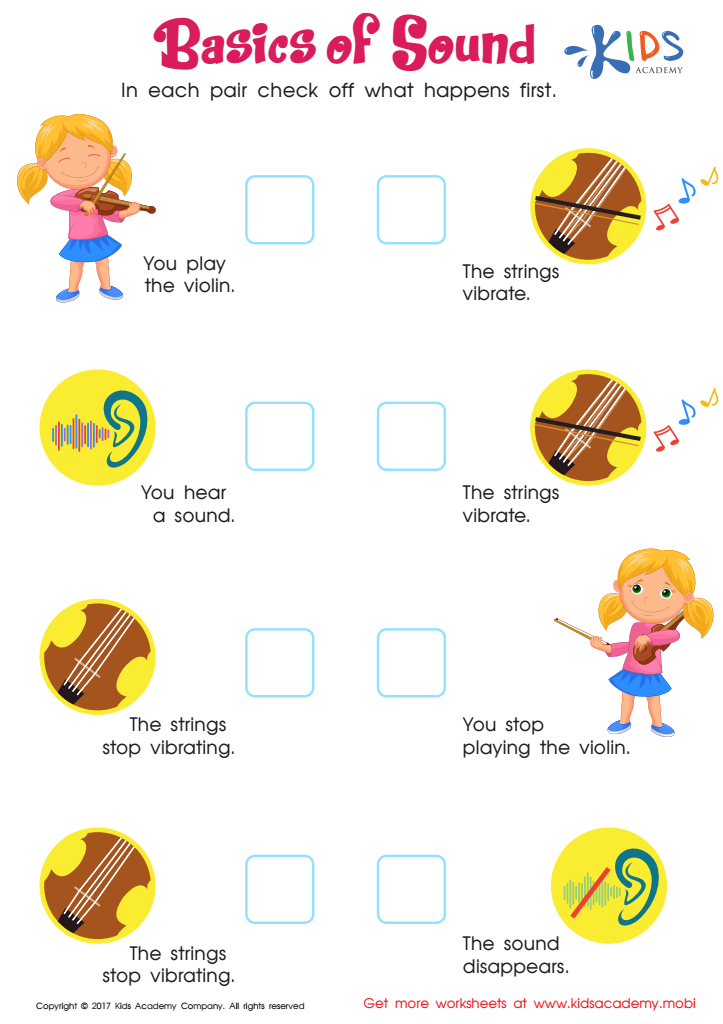Learning pitch and volume Worksheets for Kids
1 filtered results
-
From - To


Basics Of Sound Worksheet
Question/Answer
What does the Learning pitch and volume skill mean when it comes to Grade 1 Physical Science learning?
The Learning pitch and volume skill in Grade 1 Physical Science involves teaching students the basic concepts of sound. Specifically, they learn how the pitch of a sound relates to the frequency of vibrations—higher pitches have faster vibrations, while lower pitches have slower ones.
How to train the Learning pitch and volume skill in Grade 1 students learning about Physical Science?
To train Grade 1 students in learning pitch and volume, utilize interactive activities like creating simple instruments from everyday materials (e.g., rubber bands over boxes for various pitches, water glasses filled at different levels for volume). Demonstrate how tightening or loosening these materials changes pitch, and how adding or reducing content affects volume. Encourage hands-on experimentation to reinforce these concepts.
Why is the Learning pitch and volume skill important for Grade 1 students?
The Learning pitch and volume skill is important for Grade 1 students as it aids in enhancing their auditory discrimination abilities, crucial for developing phonemic awareness, which is foundational for reading and spelling. It also helps in improving their oral communication skills, enabling them to express themselves more effectively and understand others better by distinguishing nuances in speech.
 Assign to the classroom
Assign to the classroom











